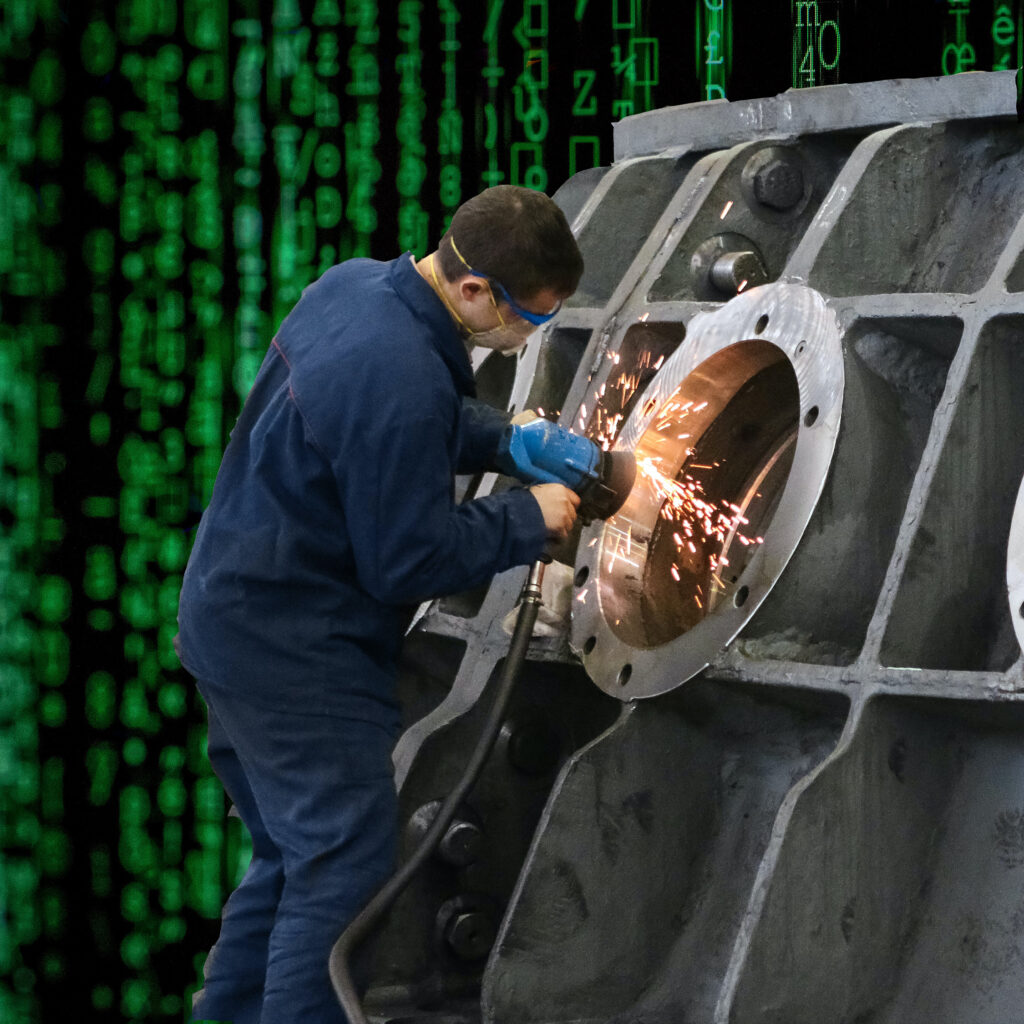Admittedly, we stole that headline (hence the quotation marks), or rather borrowed it, from a recent article published on the MIT Sloan website. It was done in the spirit of imitation being the sincerest form of flattery.
The original article introduces a framework to help readers decide when to swap out human labor in favor of generative AI for task such as crafting emails, pulling together agendas, or writing computer code.
What’s good for generative AI, we thought, should also be good for other forms of AI, specifically those used in manufacturing, such as AI and algorithms used for visual inspection and tabular AI used in predictive maintenance.
Let’s have a look at the four questions the author, John Horton, asks and see whether AI should swap out human labor for visual quality inspection and predictive maintenance, the two main use cases of AI in manufacturing.
Question 1: How much time does the task require without AI assistance?
Ideal tasks for generative AI, Horton says, are those that can be completed much more quickly by algorithms than by humans and are fairly common so once developed, a tool can be leveraged broadly.
Those same criteria are also valid for AI applications in manufacturing. Manual visual inspection of parts comes to mind: it’s time-consuming, expensive and error-prone because humans can’t focus on spotting defects for 8 hours at a time. For many applications – like consumer-packaged goods manufactured at high volumes – manual inspection is simply too expensive and so only samples are being inspected. AI can certainly complete that task more quickly and more completely – by a big margin.
The case for predictive maintenance is similar. While AI doesn’t necessarily replace a human doing the job, it avoids a human having to do the job in the first place. If the critical equipment doesn’t fail and the line doesn’t go down unexpectedly, no emergency maintenance team has to be deployed. Instead, the team can focus on performing routine maintenance on the equipment the model flags for them.
The second consideration, namely how common these tasks are, is another strong point for AI in manufacturing: product inspection – visual or otherwise – is extremely common and so is the need to proactively maintain manufacturing equipment to estimate remaining useful life and prevent unplanned breakdown.
Conclusion: one point for swapping out human labor for AI.
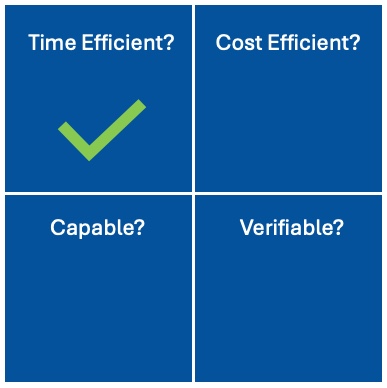
Question 2: How highly paid are the people who perform this task?
The point Horton is making here is that it makes more sense to replace an expensive staff member with generative AI than a cheap one.
This makes sense in any context from email writing to project management and widget making. However, in manufacturing the pressing issue is actually a different one: jobs are hard to fill. A Deloitte study found that of the 4 million manufacturing jobs that need to be filled by 2030, 2.1 million could go unfilled. Given the cost pressure in manufacturing this isn’t a problem that can be solved by throwing money at it, because that money simply isn’t there.
Therefore, the pressing question in manufacturing is not “Which of my people should I lay off and replace by AI?” but “Which of the open jobs I can’t hire people for can be done by AI?”
Conclusion: another point for swapping out human labor for AI
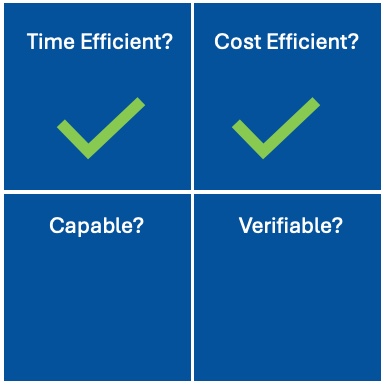
Question 3: How capable is the AI of completing the task correctly?
The next question asks whether AI can do the job competently even without a human “looking over its shoulder”, so to speak.
That’s a resounding yes for AI in manufacturing applications. Visual inspection can reach an accuracy of above 99.9%. One of our customers who makes consumer products at extremely high speeds has reached an accuracy of 99.996%. No human could ever come close to that and manually inspecting literally billions of individual products per year is not feasible anyway.
The situation for predictive maintenance is similar: given proper training, AI models can identify equipment issues with great accuracy and reliability and alert maintenance before a failure happens.
Conclusion: AI scores again, a third point for swapping out human labor for AI
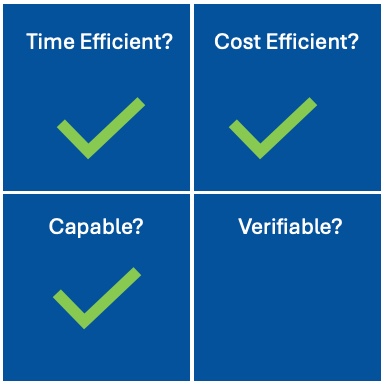
Question 4: How easy is it for humans to determine whether the AI output is accurate?
AI is new, we don’t trust it yet so can we ascertain that AI actually gives us the correct answer/information?
Generative has (or at least had) a wee bit of an issue with that. I remember an instance where ChatGPT provided me with a scientific citation which simply did not exist. Easy to check? Yes, sure. But verifying everything generative AI produces, including scientific references, is very time consuming.
In quality control, checking is as easy as double-checking whether the product flagged as defective is indeed defective. That’s what one of our clients did – they learned fairly quickly that their well-trained model is always correct.
The case for predictive maintenance is somewhat more nuanced. If the algorithm tells you that the remaining useful life of a critical piece of equipment is 5 days, how do you verify that without waiting for the equipment to fail?
The proof here is in the result: if the number of unplanned downtime and emergency repairs goes down after the model has been trained and deployed, it obviously has made the correct calls. In our experience that is the case and the savings can be significant.
Conclusion: a fourth and final point for swapping out human labor for AI
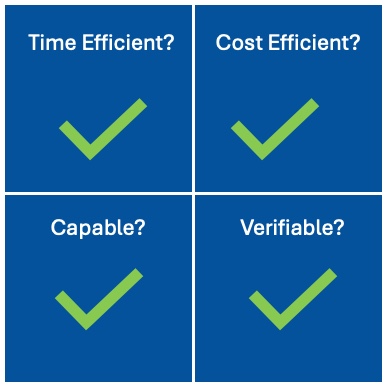
Manufacturing passes this test for the deployment of AI with flying colors. It is, in fact, an almost perfect area of application for AI. AI can do the task more quickly, cheaply, and accurately than humans can. It addresses a major challenge of many manufacturers, namely the lack of personnel and its success is easy to verify and quantify.
Read more about how to deploy AI in your plant
Find out how the stars have just aligned for AI adoption

